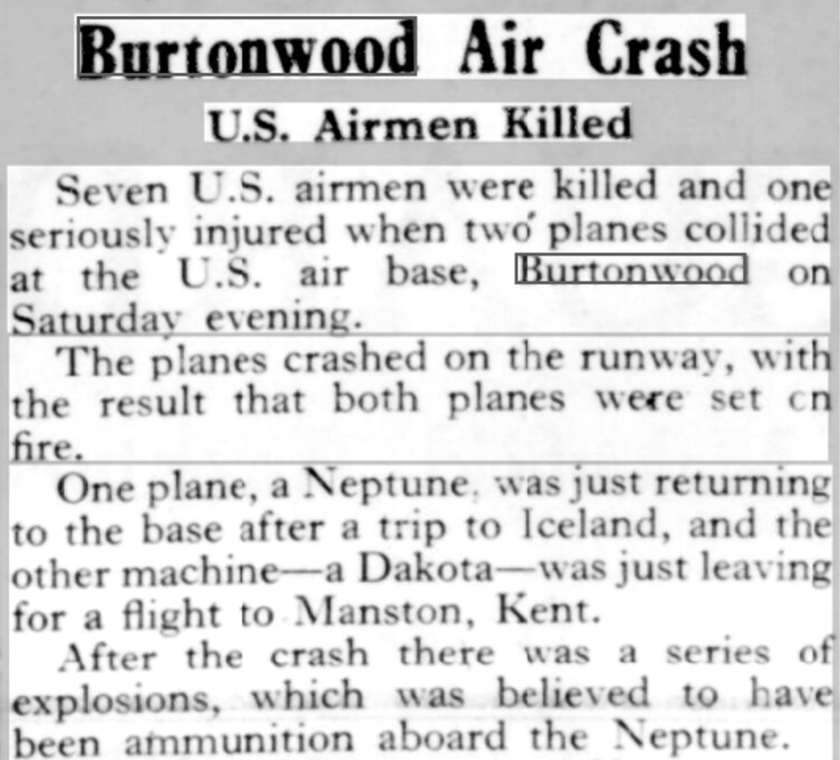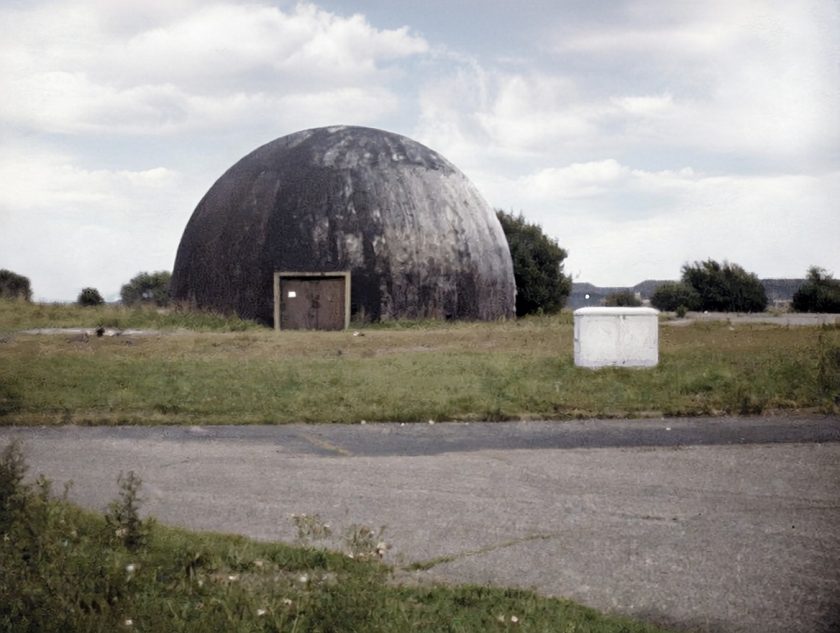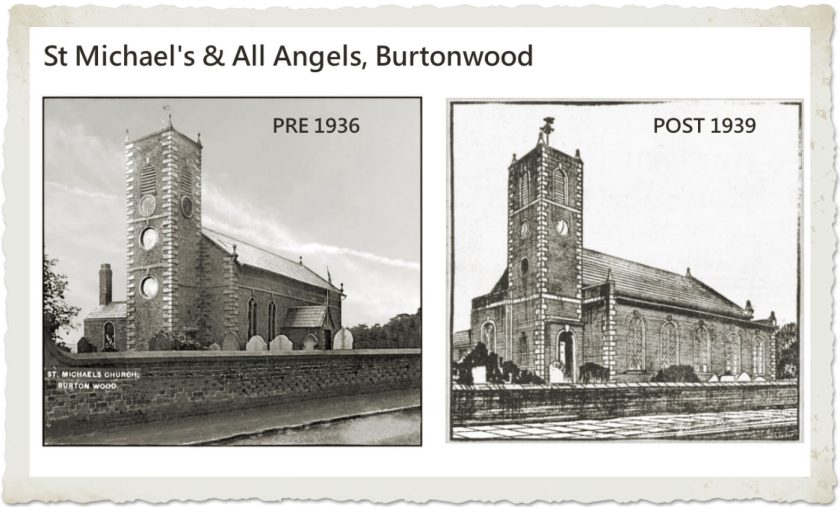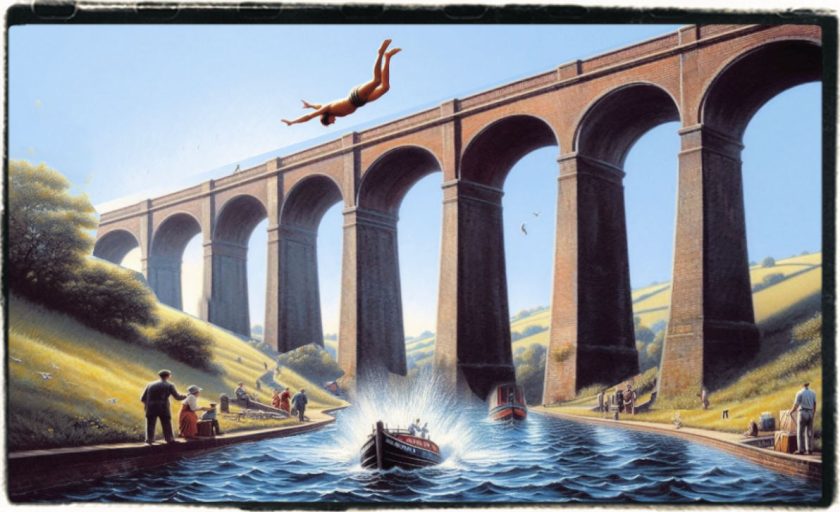Friday 11 January 1952
Seven U.S. airmen were killed, and one seriously injured when two planes collided at the U.S. air base, Burtonwood on Saturday evening.
The planes crashed on the runway, with the result that both planes were set on-fire. One plane, a Neptune. was just returning to the base after a trip to Iceland, and the other machine a Dakota was just leaving for a flight to Manston, Kent.
After the crash there was a series of explosions, which was believed to have been ammunition aboard the Neptune. The two planes were quickly a raging inferno. 4 Fire tenders from the various parts of the base were in attendance almost at once and they had great difficulty in fighting the blaze. So intense was the heat that the fire fighters were driven back when they attempted to make rescue efforts. The flames could be seen for miles around, and in the Vulcan Village the blaze could be clearly seen. When the crash occurred television receivers in Earlestown saw the film ‘‘black out.”
As soon as news of the crash leaked out hundreds of people lined the Burtonwood road and watched the two planes burning fiercely. Patrolling the perimeter of the airfield were U.S. servicemen armed with Sten guns keeping off sightseers. Many people arrived with cameras, but the guards refused to co-operate with the photographers. While the blaze was still raging, service personnel with huge are lamps were searching the airfield for casualties who had escaped from the burning planes. It was not known until Sunday that three men from the Neptune escaped through hatches which had recently been installed on the aircraft.
Mr. Arthur Potts, a well-known garage proprietor, of Market Street, Earlestown, is believed to have been the only eyewitness of the crash. M. Potts told the “Guardian” that on Saturday he was driving his car near the base. He could hear quite clearly the whirling sound of aircraft engines, but he took little notice of them, as he many times had passed the base. When getting closer to the base he saw two headlights, and Mr. Potts thought it was a car with blinding headlights. Quickly he realised that the lights were not those of a car, but the lights of a plane arriving at the base and trying to land. Mr. Potts added that he thought the plane was coming into the base too low, and he feared that his car would be struck by the aircraft. As he accelerated to clear from the area he heard a crashing noise. Further along the road Mr. Potts stopped his car and saw the plane touch down before it got to the road.
Newton and Earlestown Guardian – Friday 11 January 1952



